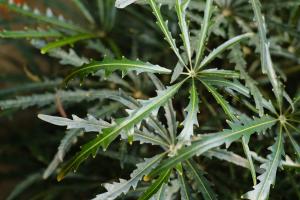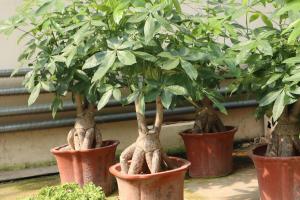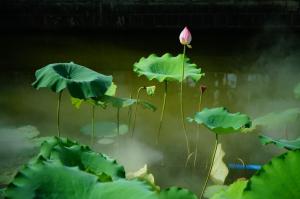What Kind of Plants Grow on a Decaying Tree
A decaying tree is a hidden universe of flora and fauna that thrive on the decomposing wood. It may appear lifeless, but in reality, it's teaming with activity that includes fungi, algae, lichens, mosses, and other plants that are well adapted to the unique environment that the decaying wood provides. In this article, we will explore the different types of plants that can grow on a decaying tree.
Fungi
Fungi are the most abundant plant species that grow on a decaying tree. They are the primary decomposers of wood, breaking down the cellulose into simple sugars that they can absorb. Fungi usually produce fruiting bodies like mushrooms or conks, which consist of a cap, stem, and gills, that emerge from the wood to disperse spores. Some of the most common fungi found on decaying wood include bracket fungi, shaggy mane, turkey tail, and wood ear. Fungi play a vital role in the ecosystem by recycling nutrients and creating habitats for other organisms.
Algae and Lichens
Algae and lichens can also be found growing on decaying wood. Algae are photosynthetic organisms that require sunlight to grow, and their presence on a decaying tree suggests the wood is exposed to sunlight. Lichens are symbiotic organisms composed of a fungus and an alga, and they grow on the surface of the wood. Lichens are able to extract nutrients from decaying wood and provide a habitat for other organisms like insects.
Mosses
Mosses are one of the many types of plants that grow on decaying wood. They are small, non-vascular plants that thrive in moist environments. Mosses on a decaying tree absorb water and nutrients directly from the wood, making it an ideal environment for their growth. Mosses also play a role in the ecosystem by providing a habitat for small organisms like insects and spiders.
Other Plants
Other plants that are occasionally found growing on a decaying tree includes ferns, liverworts, and various herbs. Ferns can grow on a decaying tree if it provides enough shade and moisture. Most liverworts grow in damp soil, but some species can thrive on a decaying tree. These plants provide a diverse ecosystem for various animals and insects to live and feed on what the plant’s ecosystem provides.
Conclusion
Decaying trees may seem lifeless, but they are home to a diverse range of plants that have adapted to the unique environment provided by the decomposing wood. Fungi, algae, lichens, mosses, ferns, and other plants create a complex ecosystem that attracts many organisms, including insects that feed on the plants, nourishing bigger animals. Plants growing on deadwood also provide essential nutrients for the soil, which in turn helps sustain other forms of life. By studying the plants that grow on decaying wood, we can understand how these micro-ecosystems work and appreciate the important role that deadwood plays in the larger ecosystem of the forest. So when you're out in nature, make sure to appreciate not only the trees that are still growing but the decaying trees that provide a world of life beneath your feet.

 how many times do yo...
how many times do yo... how many planted tre...
how many planted tre... how many pine trees ...
how many pine trees ... how many pecan trees...
how many pecan trees... how many plants comp...
how many plants comp... how many plants can ...
how many plants can ... how many plants and ...
how many plants and ... how many pepper plan...
how many pepper plan...































